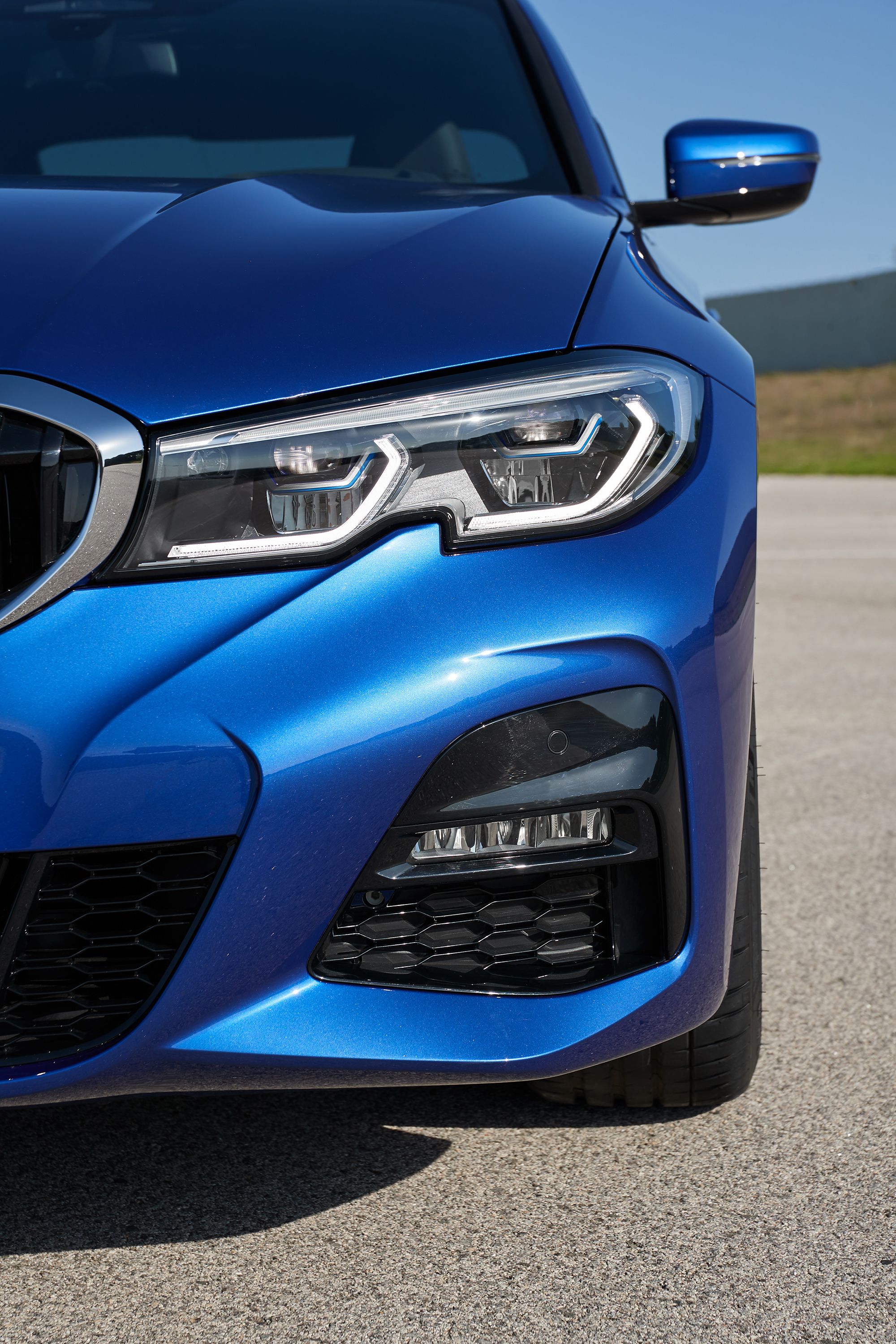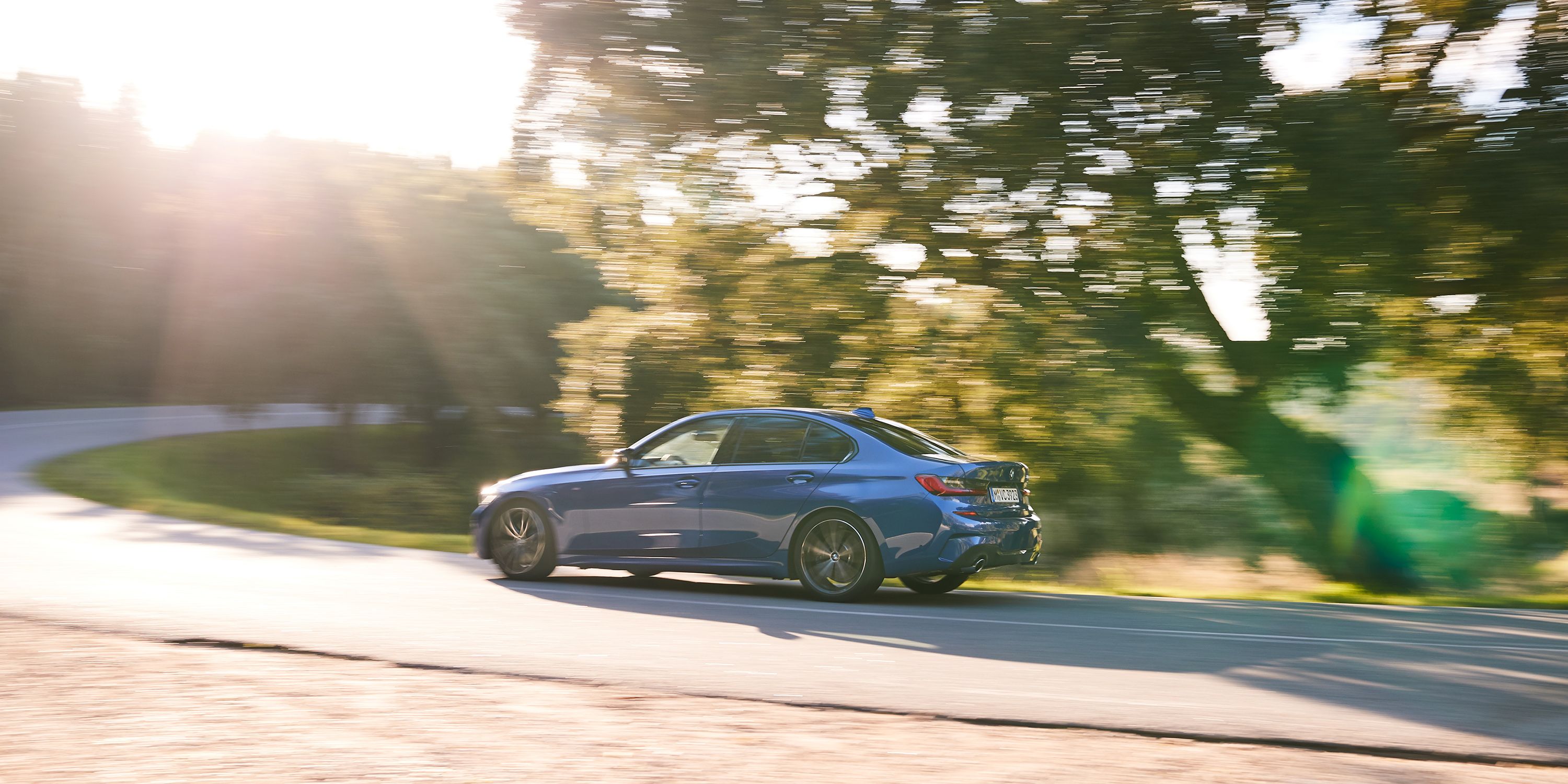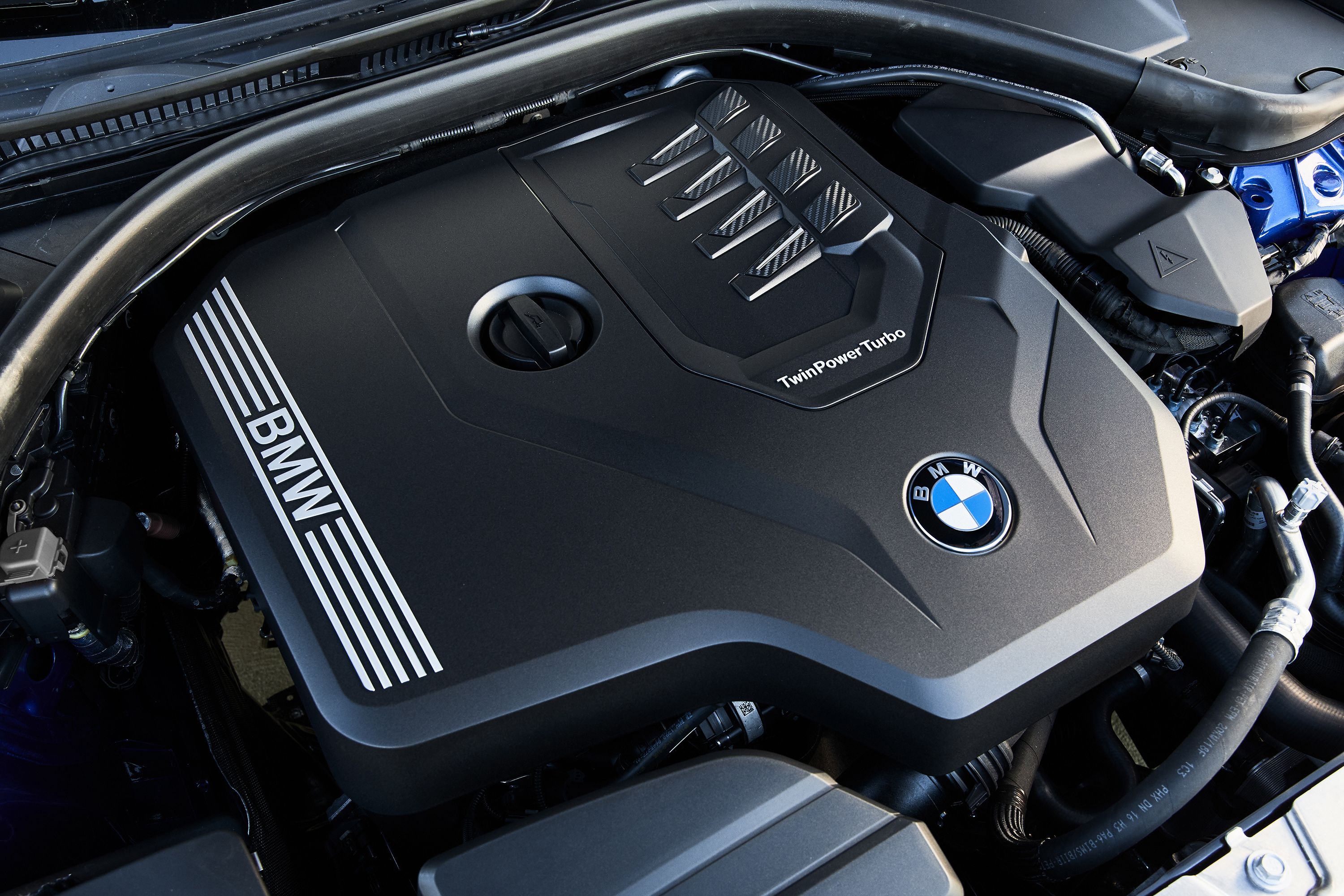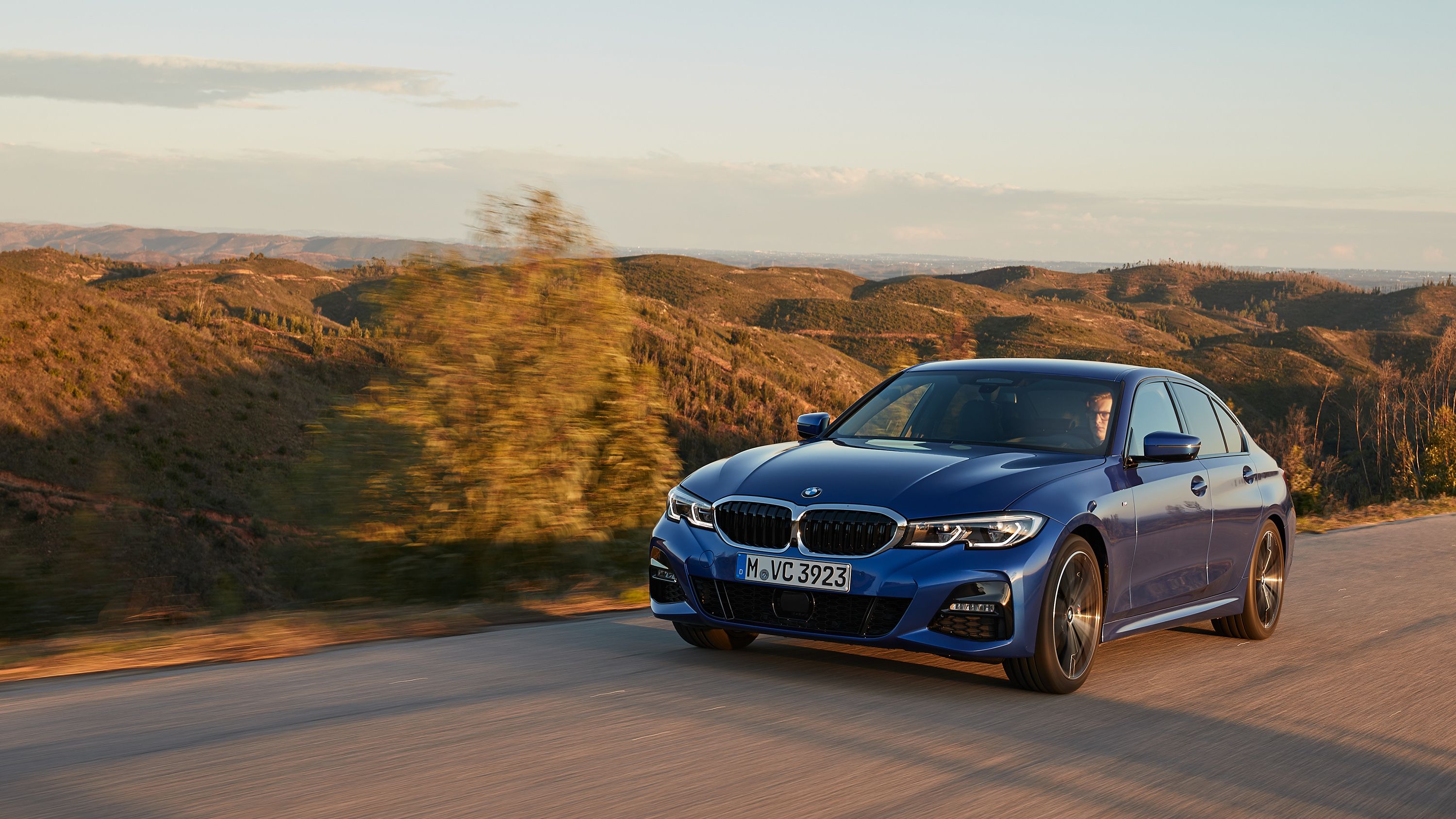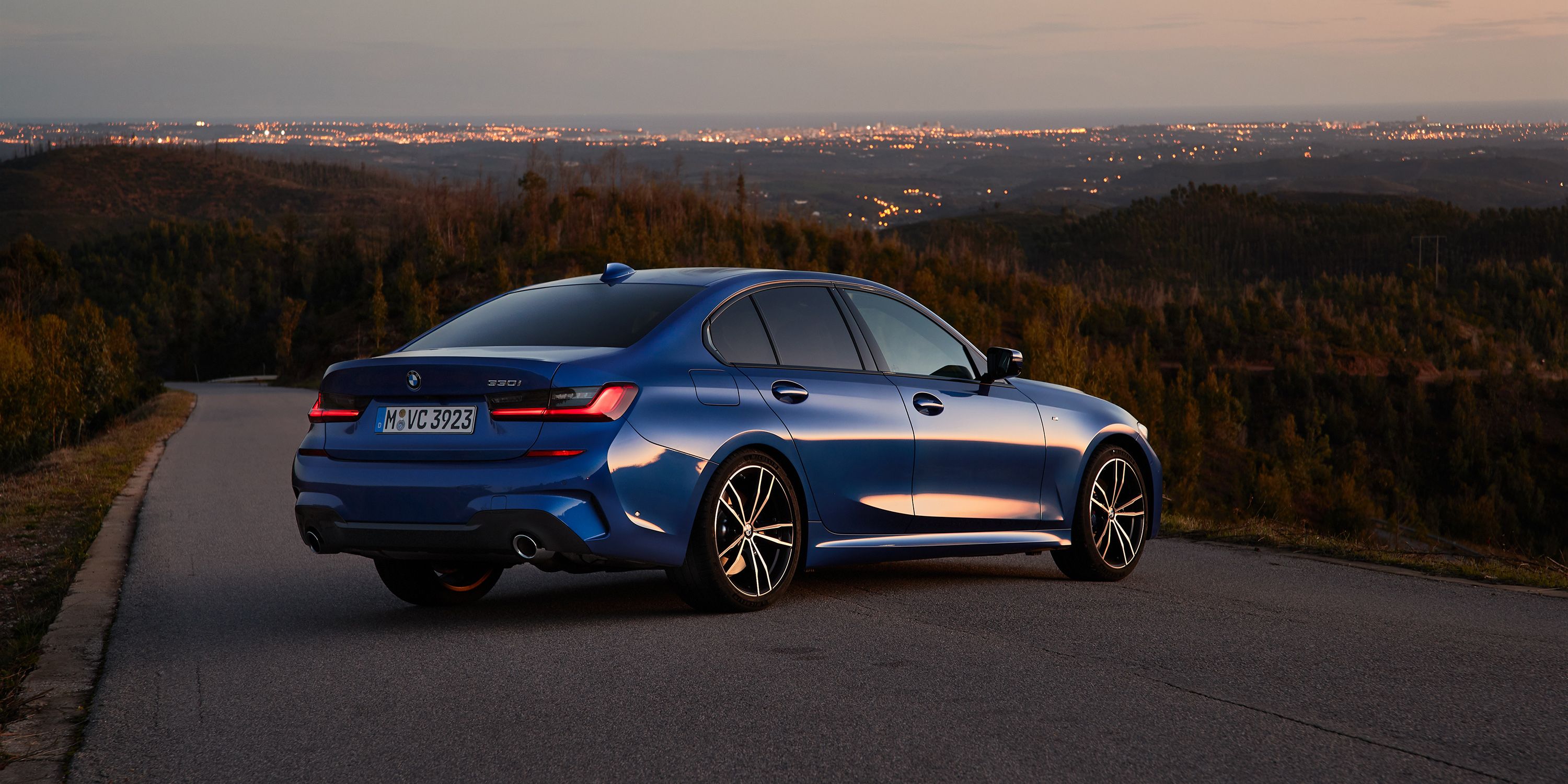There is just one thing you need to know about the new BMW 3-series: it doesn’t have an available manual transmission.
Even if you’re philosophically unperturbed by a two-pedal sport sedan, this fact signals a fundamental change in the way the geezers in Munich view this car—and us, the enthusiasts who drove this brand to success in the first place.
BMW
In truth, we have more to mourn than just the clutch pedal: the 3-series has grown to the point where it’s not really 3-series-sized anymore. The G20-chassis Three may be only moderately larger than the F30 it replaces, but seven generations of incremental size increases have resulted in a “compact” sedan that’s roughly the size of a 2003 5-series. Which is also roughly the size of a 7-series from a decade before that. Indeed, the new 3-series’ wheelbase is longer than that of either the E39 5-series or the E32 7-series. Let that sink in.
The new car’s size is apparent at first grasp of the steering wheel, which itself has grown so ludicrously thick that even an averagely endowed political leader would have a hard time wrapping his yuge hands around it. The good news is that, when you turn this wheel, the car itself now turns in response. Gone is the enormous on-center dead-spot from the F30; its vague, slow responses; and lack of natural weighting. The G20’s steering isn’t particularly talkative, even by electrically assisted standards, though in Sport mode it disables some of the functions that actively filter out steering feedback. At least it feels precise and positively connected to the front wheels, and that’s a big improvement.
BMW
BMW allowed us to drive only the most aggressive variant of the 330i, equipped with M-Sport suspension, M-Sport brakes, variable sport steering, an electronically controlled locking differential, and 19-inch staggered M wheels with Michelin Pilot Sport 4S summer tires. This is exactly the car that the accidental BMW buyer should hate, and indeed the ride is firm enough to make your mother complain. We’re off to a good start, then.
Very stiff but not harsh, the suspension provides exemplary body control, with both ends of the car doing the same thing at the same time—something that couldn’t be said about the last-generation 3-series. The body, which is 25 percent stiffer overall and double that at key suspension mounting points, no longer flexes and creaks over bumps, though we admittedly encountered only few of those on Portugal’s ribbon-smooth roads.
The 330i turns in with authority, even on Portugal’s low grip road surfaces, and the rear lets go first under anything but the lightest throttle input. Stop screaming, mom, this is called oversteer and it’s the reason you buy a rear-drive car.
The steering rack quickens with lock so progressively that the ratio change is imperceptible, and taking just 2.3 turns, lock-to-lock maneuvering requires far less hand-flailing than in most BMWs. The M-sport brakes have fabulous initial bite without being grabby.
BMW
BMW has upgraded its B46 2.0-liter 4-cylinder for better efficiency, and output has risen to 255 hp and 295 lb-ft, 7 and 37 more than before. Coupled to ZF’s eight-speed torque-converter automatic, lag is masked well enough that you could genuinely forget this engine is turbocharged. First- and second-gear ratios have been shortened, but not third, so any gains in off-the-line acceleration are nixed by a big drop in thrust thanks to the big gap going into third. BMW estimates that the 330i will reach 60 mph in 5.6 seconds, around the same as the previous car.
Despite assistance from the stereo speakers, this isn’t a particularly sporty-sounding four-cylinder, but its fat torque curve mostly alleviates the need for high revs. The cabin seems a quieter place to be than the outgoing car, though our German-spec 330i had acoustic side glass that won’t be available in the U.S.
BMW
The interior is a considerable step forward in both design and materials from the F30’s, though it still may be out-fabuloused by Audi, Mercedes, and Volvo. The BMW suffers in a few areas: the digital gauge cluster, for example, where design clearly won out over readability. The digitally rendered speedometer and (counterclockwise) tachometer are nonlinear, awkwardly shaped, and difficult to read; and there is too much random clutter. Years after Audi’s virtual cockpit set the standard for configurability and display quality, the BMW system is amateur hour at best.
BMW
There’s also a new cloud-connected, voice-command system called Intelligent Personal Assistant that allows you to say “Hey BMW” followed by a natural speech command like “I’m tired.” Should she actually understand this particular command (which would be unlikely, given our experience) she will try to wake you up by turning the interior illumination green, randomly blowing cold air in your face, and assaulting your ears with horrible 1980s-inspired synth pop. Shouldn’t she just pull the car over and demand you take a nap?
Like most recent BMWs, the 330i’s driver’s seat is mounted inboard of the steering column and canted toward the left, with the steering wheel also angled to make up for it. As a result, the heavily bolstered sport seats strain the right side of your back if you attempt to sit in line with the vehicle’s forward trajectory.
The seat offset is BMW’s cheapo strategy for maximizing side-impact protection, and it compromises the rear seat too. The rear outboard seating positions are so far inboard that there’s no chance of fitting three adults across the bench. It’s one thing to criticize a narrow car for having a strictly two-person seat, but this car is more than wide enough — it’s just 0.5 inch narrower than that old 7-series. Better safe than comfortable, sure, but why not engineer for side-impact properly in the first place? This seems an unfortunate place to save a buck.
BMW
Indeed it feels like the 3-series is full of compromises caused by trying to be everything to everyone and offensive to no one. Its chassis says “I’m a sport sedan,” but that four-cylinder is there for fuel-economy reasons alone. Its interior design says “I’m a luxury car,” but then has evidence of cost-cutting so that the 3-series can beat its competitors on price. Its infotainment system says “I’m high tech,” but most of it seems more gimmick than help.
Most importantly, this is a car that says “I am the Ultimate Driving Machine.” With those Big Words and a 3-series badge on it, that’s the elevated standard it will be judged against — by us and by the marketplace. It’s not enough to be merely good.
The 330i is, at least when equipped with all the M-Performance bits is, a substantial dynamic step forward from the Novocain-steering and Buick-suspension F30, catapulting the 3-series back into the thick of competition. Same goes for its interior, which has been elevated from drabby-shabby to perfectly nice.
Alas it’s not the game-changing return to Ultimate-Driving-Machine form we’ve been dreaming of. But you should have known that as soon as you learned that it doesn’t come with a stick.
Source: Read Full Article

